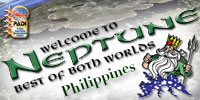PARROTFISH - SCARIDAE
Parrotfish are probably the most common fish family on a reef. These tireless fish are very active during the day. They feed on algae which they scrape off rocks and dead corals, but also living corals get bitten off with their strong beaks. Some swim alone, whilst others swim in large groups consisting of females and primary males. Parrotfish sleep in holes or underneath overhangs. This makes them easy prey for night hunters. This is why most small parrotfish make a kind of slimy sleeping bag around their body to protect them from night-feeders. This slime layer is produced by glands which are positioned right behind the gill plate. If this slime layer gets touched, they immediately wake up and swim away. When parrotfish feed, they grind corals with their strong teeth, taking out what they need. The rests is deposited as coral sand. This makes them the biggest producers of coral sand.
Length: 55 cm.Distribution: E- & S- Africa to Palau, Line Is. and Tonga.A bit similar to S. forsteni, but has a yellow area at pectoral fin base. Males multi-coloured with darker forehead, green streak under and above eyes. Dorsal, anal and tailfin are pink wit a blue margin. Females dark with red tail fin and yellow-orange anal fin. Solitary or in small groups, coral-rich lagoons and seaward reefs, from -2 to -40 m. Length: 70 cm.Distribution:E- Africa, SW- Japan, Hawaii, Fr. Polynesia, Australia, Panama, Galapagos.This species has a few variations, depending the region. Gibbus forehead. Males have a dark forebody. Upperlip with green to blue band and fine pink margin, pale streak on chin. Females brown-red head and darker rearbody, irregular lines on scales. Solitary or in pairs, seaward reefs, from -1 to -36 m. Feeds on bentic algae.
Length: 40 cm.Distribution: from the Andaman Sea to SW- Japan, Australia and New Caledonia.The males are blue-green with bright green pectoral fins and orange gill plate.Females are more creamy-grey-green with two pale stripes on belly.Usually swimming in schools on reef flats and upper reef slopes but more common on coastal- than on offshore reefs. In lagoon and on seaward reefs, down to -20 m. Length: 21 cm.Distribution: from India to SW- Japan, Vanuatu and New Caledonia.Multi-colored, reddish belly, pink chin with green spots and lines. Pectoral, pelvic and anal fins, blue-pink. Green-yellow tail-fin with two blue margins.Green moustache and saddle on tail-base.Solitaire or form small groups, inshore reefs and channels. From -2 to -18 m. Length: 70 cm.Distribution:Seyshelles & Maldives to SW- Japan, Cocos Keeling Is. and New Ireland.Females are red-brown with white dots on rear-body & tailfin, males have the greencheeks and yellow-ish forehead. Females swim in group over shallow sandy area’s, feeds on algae.On reef flats and seaward slopes, from -1 to -25 m. Length: 35 cm.Distribution: from the Red Sea and E- Africa to SW- Japan, Society Is. and Australia.From dark brown-red to purple-green body(depents maturity). Red lips and dark green lines around the mouth, yellow to green spot or streak behind the eyes. Juveniles, black to red-brown with numerous small white spots. White bar across tail base. Lives solitary except during courtship, on coral-rich reefs to -20 m. Length: 90 cm.Distribution: R. Sea, S- Africa to S- Japan, Fr. Polynesia, Australia, E- Mediterranean Gulf of California and Panama. Males, yellowish with blue-green scale markings, pink dorsal and anal fin with blue margin. Females are yellow-greenish with 4 to 5 diffuse bars(sometimes spots) on the sides. Mostly solitary, but often in small groups. Lagoons and seaward reefs, down to -36 m. Feeds on algae. Length: 41 cm.Distribution: from Andaman Sea to Marshall Is. Solomon Is. and Great Barrier Reef.Males are green and blue with pink margin on scales, darker from mid-body to tail.Green-yellow patch on tail base, green band from snout to rear gill plate.Females are yellow-grey with dark grey tail and yellow pectoral fins.Solitary or in groups, in lagoons, channels, coastal- and outer reefs, from -2 to -40 m. Length: 40 cm.Distribution: from the Red Sea to Gulf of Aden and Arabian Gulf. Very common in the region. Females pink-brown with yellow tail, males are morecolourfull. Territorial and in harems, among protected coral slopes from -1 to -60 m.
Length: 30 cm.Distribution: from Indonesia to SW- Japan, Samoa, Vanuatu and Australia.Dark blue to green, pale green area in neck. Grey cheek and grey band from eyesto pectoral fin. Green band with yellow bar from beak to pectoral fin. Among coral-rich areas of lagoons and seaward reefs to -25 m. Length: 40 cm.Distribution: Red Sea & E- Africa to SW- Japan, Palau, E- Fr. Polynesia and Australia.Very variable in colour. Greenish with pink to blue scale edges and a yellowish cheeck.Pale green tail base, Green to blue patch on snout. Younger specimen with dark rear body and pale tail-base, large black spot just before tail fin. Pink to red snout. Square cut tail! Coral or rubble areas, coastal reefs and lagoons. From -2 to -30 m. Length: 30 cm.Distribution: from Indonesia and Philippines to SW- Japan and Palau.Green-blue, from mid-body to tail-base pink to purple margin on scales.Large orange area on sides, and purple to blue saddle on snout.Usually solitary, swims together with other parrotfish.Coral-rich areas of coastal reefs, lagoons and channels. From -2 to -20 m. Length: 130 cm.Distribution:Red Sea & E- Africa to S.W- Japan, Fr. Polynesia, N. Caledonia, Australia.The biggest parrotfish of all, greenish with large hump on the head. White to pink chin and paler forehead. Often in large schools, feeds on encrusting algae and live corals which they often break by using there forehead. In clear lagoons and on seaward reefs, from -1 to -30 m. Vulnerable because of overfishing. Length: 90 cm.Distribution: from the Red Sea to French Polynesia, Izu Is. and New Caledonia.Juveniles white with orange margin on dorsal fin and orange band over the head,they live solitary. Adults live in harems, pink line from mouth to pelvic fin, yellow-orange eye, females are variable in colour. Belly can be light or dark. Along the toppart of coral slopes, usually in clear lagoons or seaward reefs from 1 to -30 m.


































